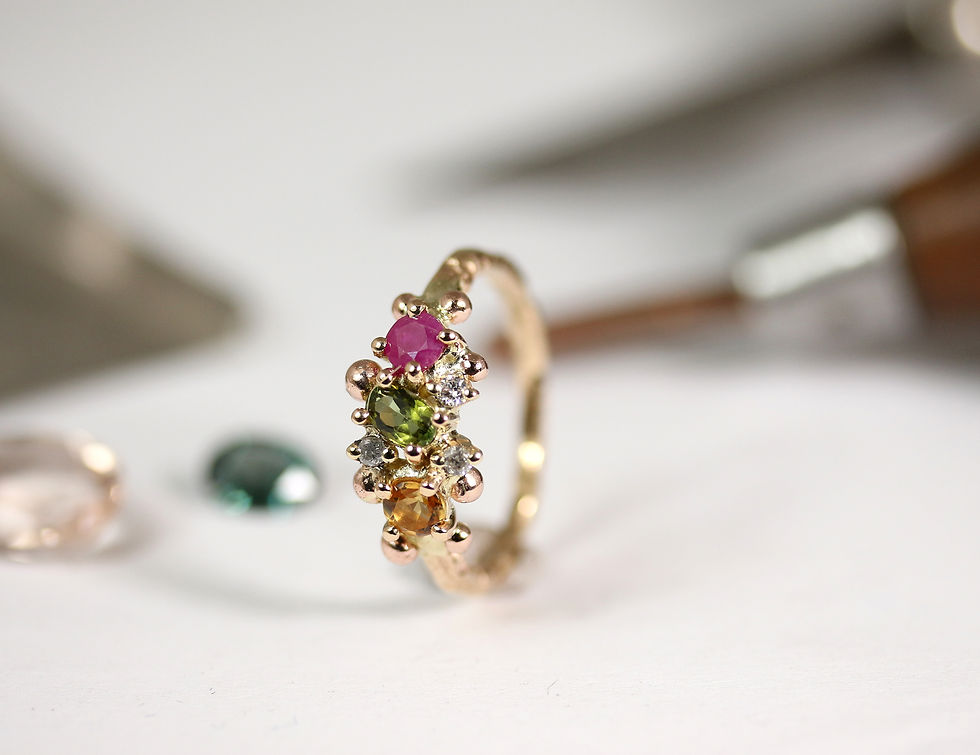5 Interesting Facts About Gemstones You (Probably) Didn’t Know
- Atelje DR jewelry, Oblikovanje nakita
- Aug 14
- 2 min read
Interesting facts about gemstones often go unnoticed when we admire a stone in a piece of jewelry. At first glance, we are drawn to its size, color, and sparkle, but we tend to judge it by its appearance without considering the fascinating stories and secrets hidden within. Every gemstone has its origin, formation process, and journey that brought it to the piece of jewelry we see today. Once we know these stories, we begin to see each gemstone with entirely different eyes.

1. Color is all about the seasoning, not the main dish
If a Sapphire were a dish, it would be rather plain without its trace elements. Tiny amounts of titanium and iron give it a deep blue hue, while chromium turns it into a Ruby. Rubies and Sapphires are closely related; they belong to the same corundum family but wear different colors.
2. A diamond is hard, but not immortal
The diamond is the hardest mineral on Earth, but hardness only means it is difficult to scratch, not that it cannot break. It has natural planes along which it can split if struck sharply. This means that sometimes a softer stone, like Sapphire or Spinel (rated 9 on the Mohs scale), can endure everyday wear better than a diamond. So yes, even diamonds require care, especially when being set into jewelry.
3. Gemstone nobility is a matter of agreement… and a bit of marketing
Why are diamonds, rubies, sapphires, and emeralds considered precious? Not because nature decreed it, but because people decided so in the 19th century. And why did the diamond become the king among them? One of the most legendary marketing campaigns: “A diamond is forever.” Before that, diamond engagement rings were not a standard for romantic proposals. Today, a diamond ring is seen as a symbol of commitment and celebration.
4. Gemstones have their fingerprint
Under a microscope, each gemstone reveals tiny inclusions, color zoning, and growth lines that disclose its origin. Sapphires from Sri Lanka often contain needle-like rutile crystals, while Colombian Emeralds may have small liquid-filled cavities. These are not flaws but natural signatures that can even precisely indicate the mine from which they came.
5. Price and rarity are like fashion; they don’t always make sense
Sometimes, a very rare gemstone can be relatively affordable because the public is not familiar with it or there is little demand for it. On the other hand, a commonly found mineral can reach an exceptionally high price if it becomes a fashion sensation. The gemstone market is therefore similar to the world of fashion: today everyone admires one stone, tomorrow it might be a completely different one. Of course, there are also extraordinary gemstones that, due to their rarity and uniqueness, achieve significantly higher prices than their related stones.
💎 Gemstones aren’t just decoration, they’re time capsules, fashion influencers, and mysterious travelers all in one. So next time you see one in a shop window or set into a piece of jewelry, remember: it may have traveled more miles and collected more stories than most of us ever will.






Comments